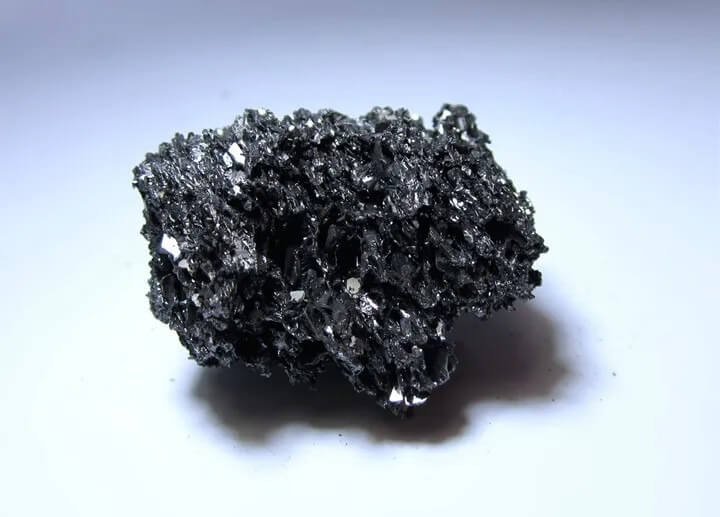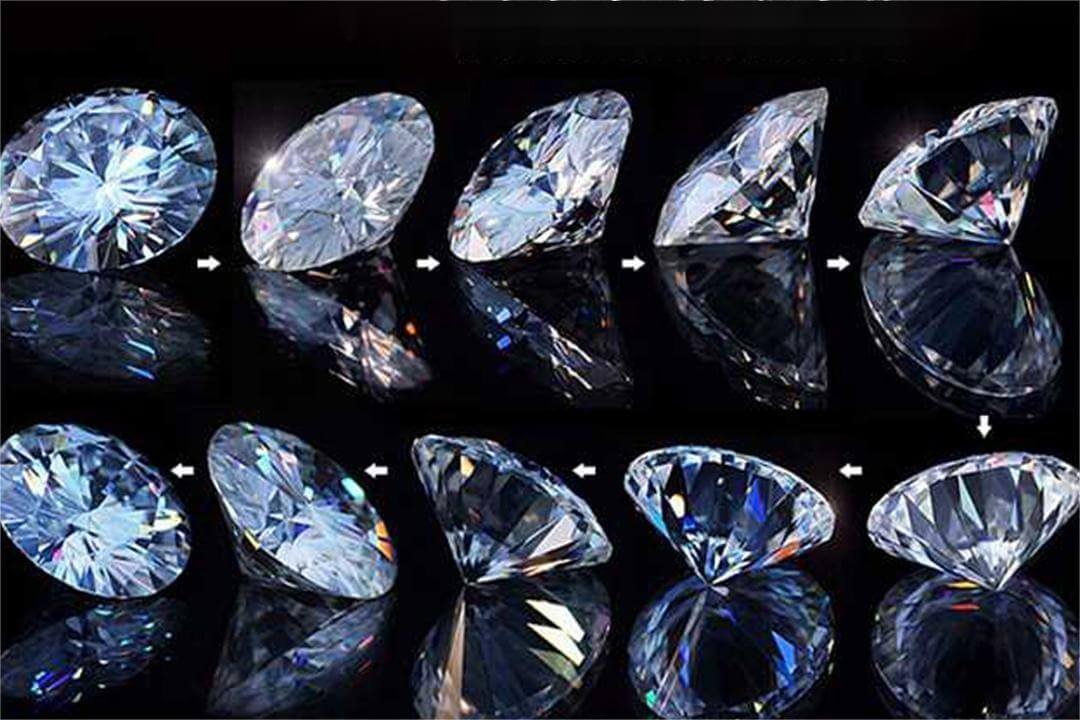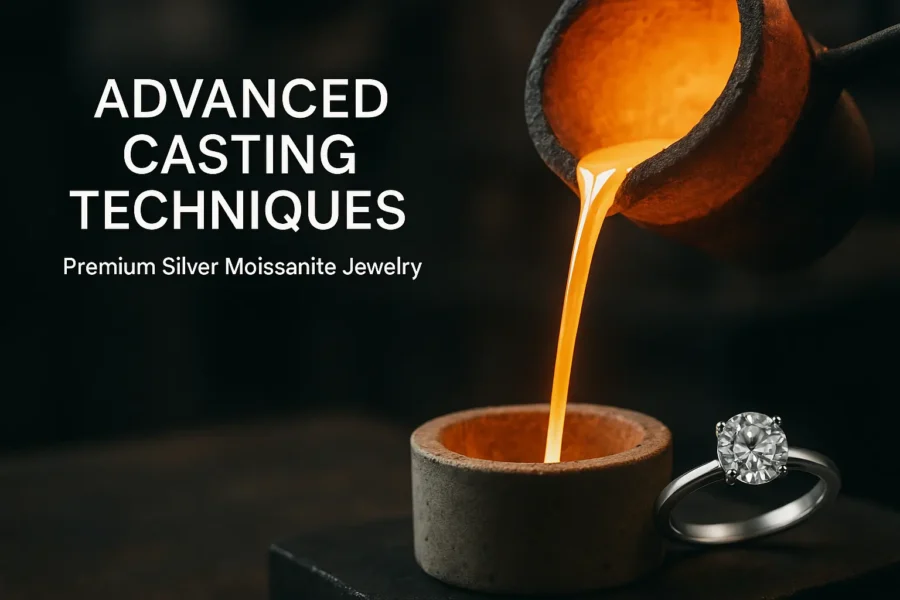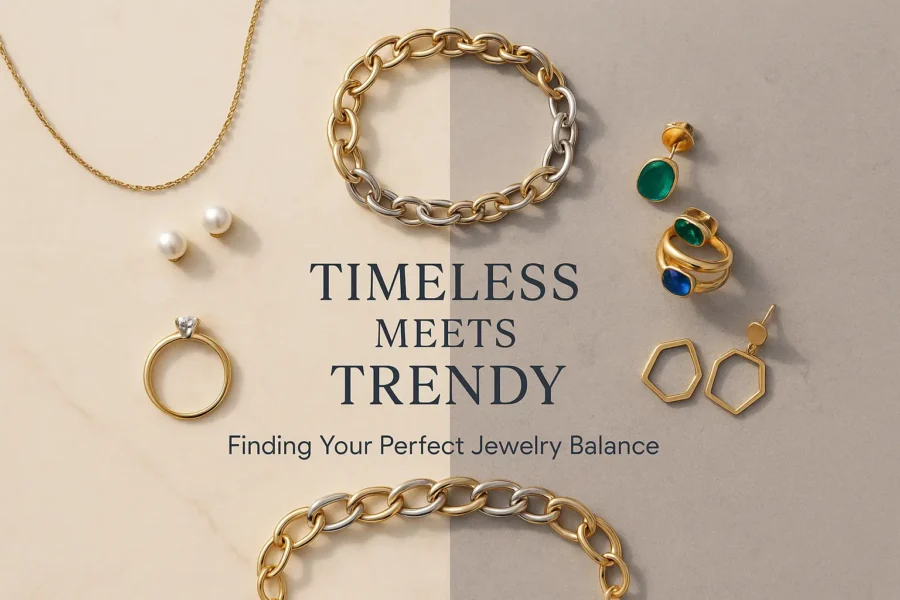Simulated diamonds have gained significant popularity in recent years as a cost-effective alternative to real diamonds. But what exactly are simulated diamonds? In this guide, we will delve into the world of simulated diamonds, exploring their composition, characteristics, and how they compare to natural diamonds. Whether you’re considering purchasing a simulated diamond or simply curious about this fascinating gemstone, this article will provide you with all the information you need to know.
What Are Simulated Diamonds?
Simulated diamonds, also known as diamond simulants, are gemstones that are designed to resemble real diamonds in appearance but are made from different materials. They are diamond alternatives created in laboratories using various processes and techniques to mimic the look, sparkle, and brilliance of natural diamonds. Simulated diamonds are not made of carbon, the main element found in natural diamonds, but rather can be made from a variety of materials such as zirconia, moissanite, or cubic zirconia.
What Are The Different Types Of Simulated Diamonds?
Cubic Zirconia (CZ)
Cubic zirconia is one of the most popular and widely used diamond simulants. It is a synthetic material that closely resembles the look of a diamond. CZ is durable, affordable, and available in a wide range of colors. However, it is not as hard as a diamond and may scratch or lose its brilliance over time.
Moissanite
Moissanite is another popular diamond simulant that is known for its exceptional brilliance and fire. It is made from silicon carbide and has a similar appearance to a diamond. Moissanite is almost as hard as a diamond and is resistant to scratches, making it a durable alternative. However, it may exhibit a slightly different color compared to a diamond.

White Sapphire
White sapphire is a natural gemstone that can also be used as a diamond simulant. It is colorless and has a high level of brilliance, similar to a diamond. While white sapphire is not as durable as a diamond, it is still a viable option for those looking for an affordable alternative.
Synthetic Spinel
Synthetic spinel is another gemstone that can resemble a diamond. It is available in a variety of colors and can be a cost-effective option for those who want a colored diamond alternative. However, synthetic spinel is not as hard as a diamond and may scratch or lose its brilliance over time.
Glass
Glass is a widely available and inexpensive material that can be used as a diamond simulant. While it may have a similar appearance to a diamond, glass is not as durable and may easily scratch or chip.
Synthetic Diamonds
Synthetic diamonds are lab created diamonds that use the same process as natural diamonds, but they are made from different materials. These diamonds have the same chemical composition and physical properties as natural diamonds, making them a popular alternative.
What Is The Difference Between Simulated Diamonds and Real Diamonds?
Composition:
Simulated diamonds are made from different materials than real diamonds. While real diamonds are formed from carbon, simulated diamonds are typically made from materials like cubic zirconia or moissanite.
Origin:
Real diamonds are naturally occurring gemstones that are mined from the earth, whereas simulated diamonds are created in a laboratory setting.
Cost:
Simulated diamonds are generally more affordable than real diamonds. This makes them an attractive option for consumers who are looking for a cost-effective alternative to real diamonds.
Durability:
Real diamonds are known for their exceptional hardness and durability, ranking as the hardest substance on the Mohs scale. Simulated diamonds, on the other hand, may not be as durable and can be more prone to scratches and damage.
Brilliance:
While both simulated and real diamonds can exhibit brilliance and sparkle, there may be slight differences in the way they reflect light. Real diamonds are renowned for their exceptional brilliance, while simulated diamonds may have a slightly different light performance.

Can Simulated Diamonds Be Mined Diamond?
No, simulated diamonds are not mined diamonds. Simulated diamonds are man-made and manufactured in a laboratory using different materials, while mined diamonds are natural diamonds that are formed deep within the Earth’s crust over millions of years. Simulated diamonds are designed to resemble the appearance of real diamonds, but they do not possess the same chemical composition or physical properties.
Are Crystals Simulated Diamonds?
No, crystals are not simulated diamonds. Crystals, such as glass, quartz, or crystal quartz, are distinct materials that are not made to resemble or mimic the appearance of real diamond. While crystals can have a similar sparkle and shine, they are not made from the same materials or have the same properties as simulated or real diamonds.
What Are The Advantages and Disadvantages Of Simulated Diamond?
Advantages of simulated diamonds:
- Cost-effective: Simulated diamonds are generally more affordable than real diamonds, making them a great option for budget-conscious consumers.
- Wide variety of options: Simulated diamonds can be created in various shapes, sizes, and colors, providing consumers with a wide range of options to choose from.
- Ethically sourced: Simulated diamonds are created in a laboratory, which means they do not contribute to unethical mining practices often associated with real diamonds.
Disadvantages of simulated diamonds:
- Durability: Simulated diamonds may not be as durable as real diamonds and can be more prone to scratches and damage.
- Different light performance: While simulated diamonds can exhibit brilliance and sparkle, there may be slight differences in the way they reflect light compared to real diamonds.
- Not as valuable: Simulated diamond do not hold the same value as real diamond, as they are not as rare or precious.
Are Simulated Diamonds Graded By The Same Standards As Real Diamonds?
While visually, compositionally, and optically they appear identical, when it comes to grading their systems of measurement are completely different.
Real diamonds are graded using the 4Cs: cut, color, clarity, and carat weight. The Gemological Institute of America (GIA) established this grading system, which is a standard for assessing the caliber and value of diamonds.
Simulated diamond, on the other hand, are not graded using the 4Cs. Instead, they are typically graded based on their own unique characteristics, such as their brilliance, fire, and durability. These characteristics are specific to the type of simulated diamond being evaluated, as there are various types on the market, including cubic zirconia (CZ), moissanite, and white sapphire.

How Can You Tell a Real Diamond From a Simulated Diamond?
Professional Certification:
A certified gemologist can accurately determine if a diamond is real or simulated by examining its characteristics under magnification and using specialized tools.
Brilliance and Fire:
Real diamonds have exceptional brilliance and fire due to their unique light-refracting properties. Simulated diamond may not exhibit the same level of brilliance and may have a different light performance.
Hardness:
Diamonds are the hardest substance on the Mohs scale, so they should not scratch easily. Simulated diamond, however, may be less durable and more prone to scratches.
Thermal Conductivity:
Real diamonds have high thermal conductivity, meaning they disperse heat quickly. This can be tested by fogging the diamond with breath and observing how quickly it clears. Simulated diamond may not disperse heat as efficiently.
Weight and Density:
Real diamonds have a specific weight and density. A gemologist can measure these properties to determine if a diamond is real or simulated. Simulated diamond may have different weight and density characteristics.
Conclusion
In conclusion, understanding the differences between simulated diamond and real diamond is crucial for consumers seeking a cost-effective alternative to traditional diamond jewelry. Simulated diamond offer affordability and a wide range of options, but they differ in composition, origin, cost, durability, and brilliance compared to real diamond. By considering these factors and consulting with a certified gemologist, individuals can make informed decisions when purchasing diamond jewelry. Whether you choose a simulated diamond or a real diamond, both options can provide beauty and elegance, allowing you to find the perfect gemstone that suits your preferences and budget.
Final Thoughts
Experience the artistry of jewelry at its finest with MinyeJwelry. Our passion lies in creating awe-inspiring cunban link chains, rings, bracelets, and a variety of other exquisite pieces. Whether you’re drawn to our unique in-house creations or have a specific design in mind, we pride ourselves on delivering top-notch craftsmanship that suits your budget. Immerse yourself in the world of affordable luxury, found exclusively at MinyeJwelry.






